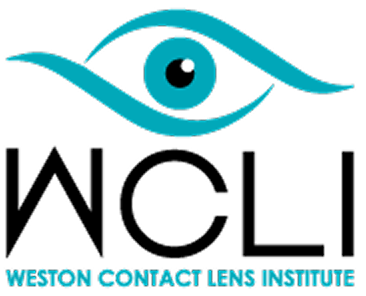Over four billion people worldwide use some form of vision correction, such as glasses and contact lenses. Myopia, commonly referred to as nearsightedness, is a condition that affects more than 2.6 billion people globally. Many parents of children with myopia believe that correcting the visual distortions is sufficient care. However, it’s so important to also address the progression of the condition.
What Is Myopia?
Myopia is a refractive error that causes distant objects to appear blurry while nearby objects stay in focus. This visual distortion occurs when the eye is elongated. Known as axial elongation, the eye becomes longer from front to back, instead of being round, resulting in light focusingin front of the retina rather than directly on it, leading to distance blur.
Some of the primary risk factors contributing to the rise of myopia among children and adolescents include genetics, frequent near work, reduced time outdoors, and excessive screen time. Prolonged periods of stress on the eyes can increase the risk of myopia or accelerate myopia progression. The number of children diagnosed with myopia each year is rising,with some estimating that by 2050, half the population will be nearsighted. What is the difference between myopia management and vision correction?
Vision Correction
Vision correction refers to the methods used to improve a patient’s ability to see clearly. The most common vision correction strategies are prescription glasses and contact lenses, which help to refocus the light entering the eye back on the retina. How light enters the eye plays anessential role in visual clarity.
Some adults opt for refractive surgical procedures such as LASIK (Laser-Assisted InSitu Keratomileusis) or PRK (Photorefractive Keratectomy), which work byreshaping the cornea to correct refractive errors. However, these procedures are only approved for use in adults. While they can improve visual acuity, they do not slow or stop the underlying progression of myopia, a key consideration when managing nearsightedness in children and adolescents.
Myopia Control
Vision correction addresses the symptoms of myopia by providing clear vision, but continuous management is crucial to slow the progression of the condition. The goal of myopia management is to slow or halt the worsening of axial growth which leads to more nearsightedness. In children and teenagers with myopia, vision can continue to deteriorate rapidly until early adulthood, when the condition typically stabilizes.
Several therapies have been shown to significantly slow the progression of myopia in children and adolescents. One of the most established options is orthokeratology (Ortho-K) ; a treatment that uses specially designed rigid contact lenses worn overnight to gently reshape the cornea. After the lenses are removed inthe morning, the patient can enjoy clear, unaided vision throughout the day. In addition to correcting vision, Ortho-K has been shown to effectively slow axial elongation of the eye, which is the structural cause of myopia progression. Because it’s used only while sleeping, Ortho-K is particularly appealing for active children or those who struggle with daytime lens wear.
An other effective treatment involves center-distance multifocal soft contact lenses, such as MiSight. These lenses are worn during the day and are specifically designed to reduce peripheral hyperopic defocus; a key factor contributing to the worsening of myopia. MiSight lenses not only correct vision but also send a “stop” signal to the eye, helping to limit its elongation over time. They are FDA-approved for myopia control in children as young as 8, and many kids adapt quickly to their use with proper guidanceand support.
Low-dose atropine eye drops, typically administered at bedtime, offer a pharmacological approach to slowing myopia. At concentrations such as 0.01% to 0.05%, these drops have been shown to effectively reduce myopia progression with minimal side effects. They are especially useful for younger children who may not yet be ready to manage contact lenses independently. Because atropine does not correct vision, it is often used along side glasses or contact lenses for full visual clarity.
Each of these treatment options comes with its own advantages, and the best approach often depends on a child’s age, lifestyle, maturity, and visual needs. A careful evaluation by an eye care professional can help determine the mostsuitable and sustainable plan for long-term myopia control.
The Risk of Unmanaged Myopia
Simply correcting myopia without controlling its progression increases the likelihood of complications. Without proper management, myopia can gradually progress to high myopia. In turn, this carries the risk of severe ocular conditions later in life. Retinal detachment,cataracts, and glaucoma are more likely to develop in patients whose near sightedness is not adequately managed.
Vision correction alone does not reduce the risksof high myopia because it doesn’t prevent the elongation of the eyes; a key factor in the development of severe long-term complications. Therefore, many families with myopic children choose a combination of vision correction and controlling the condition.
Your eyecare specialist will perform acomprehensive eye exam to evaluate your child’s vision and the likelihood offuture changes. We focus on interventions that can slow progression, inaddition to glasses or contact lenses, for children and teens at risk of high myopia. Early intervention is key for slowing myopia progression during children and protecting ocular health through adulthood.
Comparing Myopia Control and Vision Correction
Vision correction and myopia control are not the same and both play essential roles in a child’s eyecare.
Vision correction helps yourchild see clearly in the moment. Glasses, contact lenses, or other corrective options sharpen distance vision so your child can perform well at school, enjoy sports, and navigate daily life comfortably.
Myopia control, on the other hand, is about the long game. Its goal is to slow the progression of nearsightedness and reduce the risk of serious eye diseaseslater in life, such as retinal detachment, glaucoma, or myopic maculopathy, all of which become more likely as myopia worsens.
The two often go hand-in-hand. Most children receiving myopia control treatment still need vision correction, depending on the type of therapy used. That’s why the most effective care plans are personalized, balancing clear vision today with long-term eye health, all guided by a qualified eyecare professional.
Safeguard YourChild’s Ocular Health
With myopia (nearsightedness) rising at an alarming rate worldwide, understanding how to manage its progression is more important than ever. Simply correcting vision is not enough, without active myopia control, the condition may continue to worsen, increasing the risk oflong-term complications such as retinal detachment, glaucoma, and irreversible vision loss.
If your child has recently been diagnosed with myopia, or if you're noticing early signs, now is the time to act. At the Weston ContactLens Institute, our experienced eyecare practitioners specialize inevidence-based myopia management. We’ll work with your family to develop a personalized treatment plan that supports both clear vision today and lifelong eye health.

.jpg)




